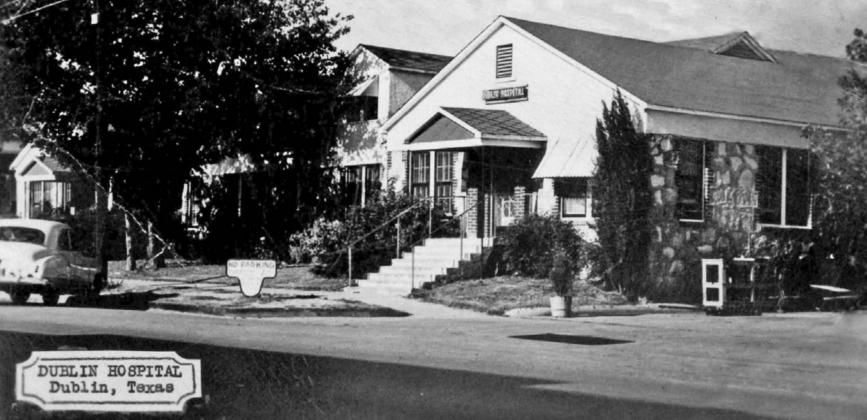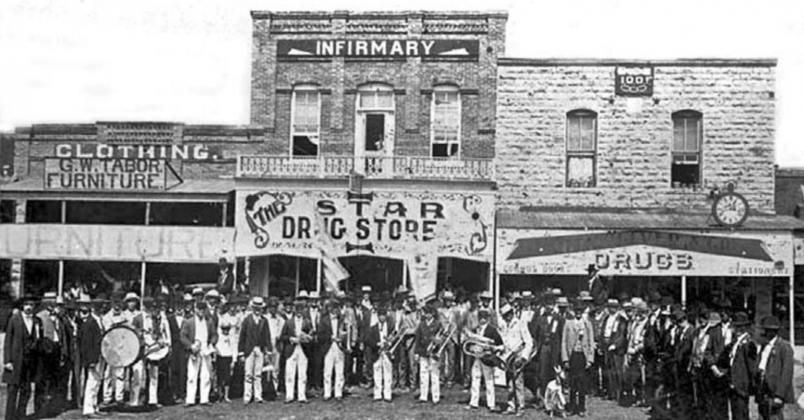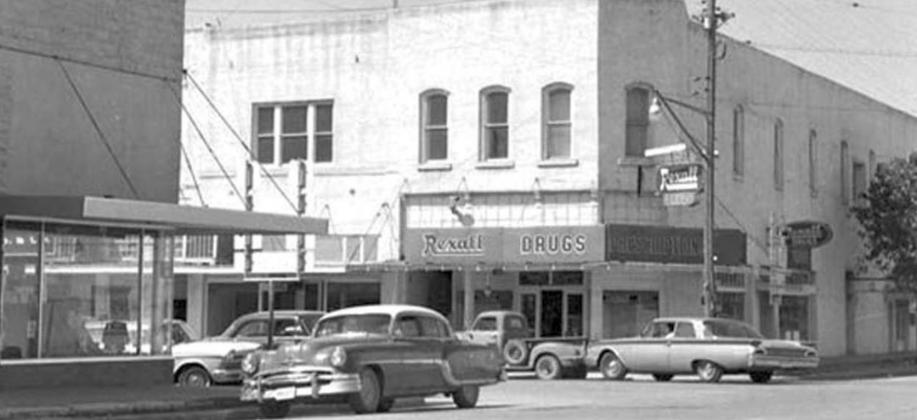The first indication of a hospital in Dublin appears to be Dr. O’Brien’s Sanitarium or Infirmary on Elm Street in downtown Dublin. We have several photographs of the building. One of the photographs was taken in 1907. That Sanitarium building was later bought by Sam Prim and Morris Hoffman to be remodeled into a hotel in April 1919.
In March 1932 an article was published saying that Dr. William H. Guy was moving into his new facilities. He had been practicing for four years in Dublin. The new facilities were located on the second floor of the Harrell Building later known as the Franks Rexall Drug building. It was to have five large well lighted rooms, a reception room, consulting room, and operating room and two bedrooms each fitted with two hospital beds. The clinic was fitted with modern equipment, including facilities for treating and testing eyes. (Dublin Progress March 18, 1932)
The clinic began with only four beds with one nurse attending. Over the next six years it grew to have ten beds with three nurses. Over that six years Dr. Guy and his staff built a reputation for patient care. Dr. Guy treated eye, ear, nose and throat afflictions and also provided obstetric care. He also had a reputation for successful operations. I know of two people who were born in the Guy Clinic. One was born in 1932, the other in 1943.
With their successful clinic they were needing additional space and started to arrange for a new hospital building on Patrick Street. Dr. Guy continued the use his clinic even after the larger Dublin Hospital had opened. Plans were for the new building to be completed by January 1939. It was to be a 45 by 100 foot building. The Guy Hospital was built for $6000. Materials were $4000 and the land was $800.00. Labor for the building was $1200 furnished by contractor Carl Stevens. (Dublin Progress, September 23, 1938)
The Dublin Hospital was quite successful, most certainly because of the hard work and long hours put in by the doctors and nurses. Clara Faulkner, a well known R.N. said in the 1940s “Weeks were 7 days long and hours meant nothing. Patients would come from West Texas and everywhere. We’d fill every bed in the nursery and make cribs in the dresser drawers and let babies stay in their mother’s rooms.” (Covered Wagons Keep on Rollin’, Westphal, p300)
The hospital became incorporated in November, 1947. Under that incorporation, Dr. Tom Bryan enlarged the hospital from 6 to 21 beds. In June 1962, the hospital was again updated. During the remodeling, the hospital office was relocated near the front entrance. Besides a modern laboratory, the building had 25 beds, a nursery with five bassinets and an incubator, an x-ray diagnosis room, operating room, emergency treatment room and an O. B. room with an incubator. The windows in the building were later replaced and the door in the northwest corner of the building was replaced with a window. (Covered Wagons Keep on Rollin’, Westphal, p.295)
Certain types of surgery were performed on a regular basis. Dr. Jordan took my brothers appendix out there. Carl Jordan was a very well respected surgeon. Dr. Pate, Dr. Jordan, Dr. Cole and Dr. Bryan delivered an untold number of babies after World War II. Families chose the Dublin Hospital because of the excellent care the mothers received.
By 1980, Medicare was making increasing demands for updating the facilities. Taking care of patients and meeting government mandates tested the facility. The Dublin Hospital finally agreed to sell the facility to Harris Methodist at $270 per share to try and find solutions to all the government mandated requirements. The intent was to join a larger organization with the hope of lowering expenses in purchasing equipment and services. In 1982 the hospital expanded to 39 beds and a new hospital wing was added. Things seemed to be going well until 1990 when Harris shut the hospital down. Harris said that the Dublin facility was losing money. Most Dubliners, knowing how well the hospital was run, thought that was a stretch at best. Profits from the hospital were in the tens of thousands of dollars. “While not exorbitant, those profits do, however, show that the Dublin hospital was never a drain on any parent company.” But still, the larger Harris organization had their way and the hospital was closed permanently. (The Dublin Citizen, April 9, 2009)



